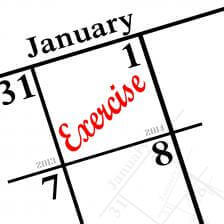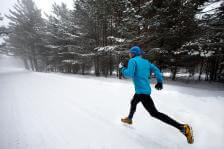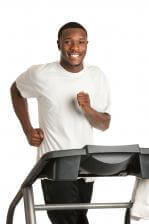5 Fitness Mistakes to Avoid This Year
Are you sabotaging your New Year’s resolution to get fit and healthy? Check out the 5 biggest mistakes you could be making – and how to avoid them for faster fitness results!
Ben Greenfield
Listen
5 Fitness Mistakes to Avoid This Year

The 6 Best Ways to Stick to Your New Year’s Resolution
and
The Top 6 New Year’s Resolution Mistakes
So now, in the spirit of keeping the ball rolling, I’m going to warn you about 5 fitness mistakes that can keep you from reaching your goals – mistakes that you can now avoid for faster fitness results. Without further ado, let’s jump right in:
Mistake #1: Eating to Exercise, Then Exercising to Eat
It’s a little bit funny if you think about the daily habits of many exercise enthusiasts. We wake up, eat lots of food, then go to the gym so we can burn that food off, then eat after the workout so we can refill our food stores. It’s easy to get stuck in this vicious, energy-draining cycle of eating, exercising, and then eating some more.
But exercise can actually become more fun and much more meaningful when instead of being utilized as a calorie-burning movement protocol, it is used to prepare you for specific events in life such as:
-
Exercising to get ready for a triathlon, a run, a golf tournament, or a tennis game.
-
Exercising to look good in your swimsuit this summer.
-
Exercising to get out and get fresh air and experience nature.
Frankly, it’s stressful on the body to push it into a consistent cycle of working hard to digest food, then working hard to burn that food off. So ask yourself an honest question:Ddo you simply exercise because you ate a few too many cookies the night before, or is your exercise more meaningful than that?
Mistake #2: Sitting All Day, Then Exercising
Research has shown that no matter how much you exercise at the beginning or the end of the day, you still have significant cardiovascular and chronic disease risk factors if you spend 8 hours a day sitting (or even more than 2 hours at any given time!).

In my episode 7 Ways to Burn Calories by Standing More, you learn that you can stand while you’re at your desk, stand while talking on the phone, and stand while snacking – all of which burns a lot more calories than sitting to do the same things.
Additionally, in my episode on Unconventional Ways to Burn Fat, you learn even more tricks to make that end-of-the-day workout optional, such as stopping once in a while to do jumping jacks or squats (yes even in your office or bathroom stall), wearing a weighted vest, and even doing deep breathing exercises.
If you make it a habit, you build-in some exercise all day long. For example, while writing this episode, I am standing. I also do 10 squats after I finish fixing each writing mistake. Easy, eh?
Mistake #3: Staying at Comfortable Temperatures
I was listening to a guy named Daniel Vitalis speak recently at a conference. He used the interesting contrast of a big, lean, mean grey wolf and a domesticated, pampered, scrawny Chihuahua. Both are dogs, but the former has had to face significant environmental challenges on a daily basis that forced it to become powerful, stress-resistant, and resilient, while the latter has lived life in bubble and would probably die if left outside overnight.

By subjecting your body to some discomfort every day, including not relying upon your indoor heater and air conditioners, you force your body to shift blood and produce fat burning hormone (such as adinopectin) and protective proteins (such as heat shock proteins) – all of which gives you superior fitness and fat loss and helps to achieve your goals faster!
Mistake #4: Not Having a Clearly Defined Goal

Or do you have a vague goal to simply “look good” or “weigh less” or “feel healthy”?
Unless you have a scheduled and clearly defined goal, you’re setting yourself up to fail. One of the first things I personally do in January of each year is sit down and make a schedule of which events I want to compete in or achieve.
But I don’t stop there. I then whip out my credit card and sign up for those events. And I don’t stop there either. I then post those events to my Facebook page so people know I signed up, giving me some pretty powerful extrinsic motivation and accountability.
So rather than vowing to “look good in a swimsuit,” why not go and buy that swimsuit that’s 3 sizes smaller than what you’re wearing right now? Hang it in your bathroom so you have to see it every day. Then take a photo of it, post it to whatever social media account you use, and tell the world you’re going to be wearing that at the beach exactly 3 months from now.
See the difference?
Mistake #5: Spending Too Much Time in “No Man’s Land”

I’ve written plenty of times about the benefits of High Intensity Interval Training (HIIT), but it seems like when I’m at the gym or watching people exercise, folks still aren’t getting the message that HIIT means you’re going hard. Very hard.
Instead of hopping on a treadmill to run for 30 seconds as hard as possible, then walk for 90 seconds, and repeat 10 times, it’s too tempting to simply run or walk at a steady, slightly hard pace for 30 to 45 minutes.
We seem to be wired with an innate urge to avoid frequent fluctuations in pace (despite these fluctuations having been shown to give us the biggest cardiovascular and metabolic benefits). We inherently prefer to exercise in that “no man’s land” zone of slightly hard, but not too hard.
This year, make it your goal to avoid long periods of aimless, mindless, steady-state cardio at a moderate pace, and to instead experiment with extremely hard intervals and surges, followed by full recovery periods. The latter will get you far more fitness bang for your buck!
So that’s it! Do you have questions about these 5 fitness mistakes that can keep you from reaching your fitness goals? Then head over to Facebook.com/GetFitGuy and ask your questions there!

